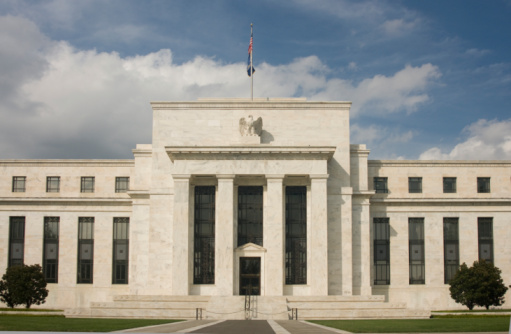Quantitative easing has been under a great deal of scrutiny for some time, and the Federal Reserve’s balance sheet keeps growing despite the tapering efforts. The stock market, and the bond market for that matter, have grown so used to stimulus and easy money that it almost just feels expected now. But things may have started to change this past week that could increase the argument for rate hikes to begin sooner than expected.
Janet Yellen recently gave equities a bounce when she said that incredibly low interest rates would remain in place for a considerable period. Many feel that the rate hikes will not come until the end of 2015.
Now a speech from St. Louis Fed president James Bullard late on Friday may have some economists and market participants thinking that the rate hikes could come sooner than expected. Bullard even mentioned a period as by the end of the first quarter of 2015. At the time, Fed Funds futures at the CME website were projecting that there was not a 100% chance of a rate hike priced in until June of 2015.
So, what has to happen for rates to be hiked in general? And what has to happen for the rate hikes to come sooner than expected?
For rates to rise in general, the Federal Open Market Committee (FOMC) has to be happy with its dual mandate of fostering full employment and promoting price stability. The unemployment rate has come under the first hurdle of the 6.5% unemployment rate, but everyone knows that the number is highly massaged and doesn’t include the army of people who have exited the workforce entirely.
ALSO READ: America’s Most (and Least) Healthy Cities
Another issue is that the Fed really wants to see 2.0% inflation, and even up to 2.5% inflation. And on growth, gross domestic product (GDP) needs to get back closer to 3.0%. We also presume that the Federal Reserve wants to be out of the bond buying business entirely before it starts hiking rates.
That was just for a normal rate hike environment. Several things could foster the beginning of the rate hikes sooner than expected.
It is expected that the European Central Bank will add stimulus and a rate cut in June. This may simply be a lagging effort that is behind the curve, and if it aids European growth prospects then the United States could benefit further. Another issue that could foster rate hikes sooner than expected is if the dollar gets weaker. That helps exports, but it can lead to inflationary pressures — even above the 2.5% upper threshold before the Team Yellen starts to worry.
GDP turned in a paltry 0.1% growth in the first quarter, and some argued that the number may have been even a tad worse. While it seems that the FOMC need not dare consider a hike in a no-growth environment, many economists and fed watchers believe that a snapback in GDP will take us back to above 2% — and maybe even closer to 3% — before the year is over.
Another issue is that this is an election year. The FOMC wants to be independent as it can from the politicians, and Yellen could show the politicos that she doesn’t want to be pressured by the whims of the electorate. That may be a very low risk event, but it is one to consider if the economy improves and if the Fed has stopped adding new bonds to its balance sheet.
ALSO READ: Companies With the Best (and Worst) Reputations
A rise in commodity prices and food prices could act as the hidden wild card that would force Yellen into raising rates. Food prices have in many cases gone through the roof. Crude oil has slowly crept back up to more than $101.50, and the average price of gas per gallon is around $3.63 now. What if food prices rise too much, and what if gasoline gets back over $4 per gallon everywhere rather than just in higher-taxed pockets?
Housing has been in the tank again, but some positive metrics have been seen. If the Fed believes that a small rise in rates will not kill housing, then perhaps they will act sooner than expected. And now (in a move that got us in trouble before) the FHFA wants banks and regulators to loosen up on their lending standards for mortgages.
It seems unlikely that Yellen will jump the gun on rate hikes. After all, Fed chairs in the past get criticized for hiking rates too much more than they do for keeping the easy money flowing a little longer. The problem is that quantitative easing is ending and the easy money via low rates seems to keep getting more and more critics each month.
ALSO READ: Twelve Analyst Stocks to Buy Under $10 for Big Upside
Thank you for reading! Have some feedback for us?
Contact the 24/7 Wall St. editorial team.


